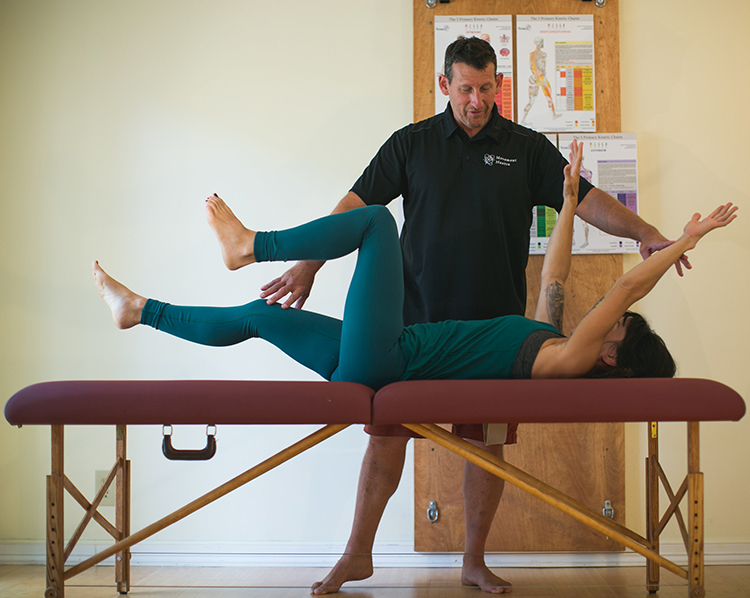
Dynamic Neuromuscular AssessmentTM seminars take the skills you already possess and puts them into a context that will make those skills more effective.
When you employ what Joseph calls The Five Essential Skills with the corrective strategies you already use, the results of your work will have a quantum effect with your clients.
Essential Skill #1 – Hybrid Movement Assessment:
- Learn to seamlessly transition between direct muscle testing strategies and indirect muscle testing – Manual Muscle Testing redefined
- We will change the paradigm of testing muscles by assessing the response to movement. Can the nervous system and structure appropriately respond to the movement environment?
The Intrinsic Kinetic Chain has many players that cannot be evaluated with direct muscle testing strategies. Hybrid Movement Assessment strategies are essential for evaluating the players in respiration – a key element in assessing clients.
Essential Skill #2 – Completing the Feed-back Loop:
- Afferent sensory neurons relay information about how movement is responding to the movement environment: this is feed-back motor control
- Efferent motor neurons are the motor instructions to the periphery: this is feed-forward motor control
- Using both feed-back and feed-forward movement completes the proprioceptive feed-back loop
Compensation is learned through the feed-back loop. Adaptation is need and response, two sides of the movement equation. Motor learning requires the integration of both feed-back and feed-forward communication to and from the brain. Feed-forward motor instructions allow the motor control center of the brain to capitalize on compensation patterns. DNA’s movement assessment strategies uncover hidden compensation.
Essential Skill #3 – The Functional Compass:
- The functional compass provides a map for movement potential
- Movement happens through non-linear spirals
- Joints act in compression and distraction
- Joint assessment using the functional compass evaluates the spectrum of movement potential
Shock Absorption of the Deep Longitudinal Kinetic Chain is interdependent with the ability of the joint capsule to translate compression to distraction over its range of motion. When the joint loses its ability to respond appropriately, compensation will show up as a symptom in ligaments, tendons, muscle and fascia. DNA’s joint by joint assessment strategies give laser focus attention on the root cause rather than the symptom.
Essential Skill #4 – Functional Dysfunctional Movement:
- This is analogous to non-painful dysfunctional movement
- Movement functions can appear to be available with direct testing strategies
- Hybrid Movement Assessment uncovers hidden layers of compensation
Movement functions can appear to be available with direct testing strategies. Challenging those movements with Hybrid Movement Assessment will uncover hidden layers of compensation: “just because you can doesn’t mean you should.”
Often, our clients are reinforcing compensation through their daily movement. DNA’s assessment strategies identify these patterns so they may be appropriately addressed.
Essential Skill #5 – Eccentric Movement Assessment:
- Direct Concentric muscle testing is a mere snapshot of movement
- Eccentric Movement Assessment challenges movement over a range rather than a snapshot
- Eccentric Movement Assessment incorporates the SAID principle into assessment strategies
The rules of the SAID principle states that adaptation is specific to demand. If the motor program is not cued into the corrective strategy, it may not respond to the correction. Eccentric Movement Assessment cues the motor control center to a larger context of information. This brings up compensatory patterns that would not be revealed in standard concentric testing strategies.
DNA’s assessment strategies are unique as they incorporate both sides of the movement equation. Concentric activation must be balanced with Eccentric stabilization. This skill set can be explored through the core subsystems of The 5 Primary Kinetic Chains.